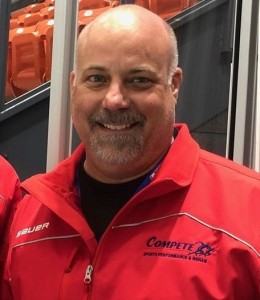From the Trainer’s Room: How to avoid burnout during the hockey season

The demands placed on athletes today in any given sport has increased immensely over the last 10 years.
It is not uncommon for Colorado hockey players to play on a club and high school team at the same time. This means 3-4 practices a week and 2-3 games a weekend. Not to mention dryland and private lessons which many older players are also involved with.
Tournament weekends can sometimes mean eight or more games in 3-4 days.
Sound alarming? It should.
With all of the hockey activities going on, where is the time for school and sleep, not to mention time to just hang out with friends and be a kid?
This type of busy schedule can lead to burnout during the hockey season. Burnout has been defined by sports psychologists as “physical/emotional exhaustion, sport devaluation, and reduced athletic accomplishment,” as stated by R.H. Cox in “Sports Psychology: Concepts and Applications.”
Some common signs of burnout include fatigue, loss of interest in sports, school and other daily activities, chronic illness or body soreness, irritability, decrease performance in sports or school and trouble sleeping. Burnout can lead to an athlete quitting a sport which can and should be a fun and healthy experience. Ceasing athletic programs can lead to a sedentary future where exercise is related to the physical and emotional pain dealt with at a younger age.
Sports should be a healthy foundation for kids to turn into healthy adults that remain active later in life and viewed as an important part of your daily life.
So what can be done to limit the chance of burnout? There are many different options that are not always easy to swallow. It starts with saying “no” sometimes. This sounds crazy, right? It’s not to say stop doing everything, just pick and choose what is important and what may not be. It could be season long or just at certain times of the season.
For starters, I am a firm believer that any athlete needs a minimum of one day of rest a week during their peak season. This is a bare minimum for an elite athlete. The younger the athlete, the more time off they need. Set a priority list of what is best for the athlete’s development and when things get too busy or signs of burnout pop up, start eliminating events of less importance.
Two important aspects of avoiding burnout are also recovery work and nutrition to improve an athlete’s health and decrease muscle soreness and fatigue. Is your athlete eating enough? Is your athlete eating often enough and at the right times?
One common mistake in sports nutrition in athletes is that they do not eat between lunch and dinner even though they may have 2-3 hours of activity in that time period. The other nutrition mistake is not eating a quality protein source following practice. Many practices end late at night and athletes simply don’t eat afterwards. This does not allow the body to repair itself and increases muscle soreness and fatigue the next day. Recovery work after training is also important in helping the body repair itself following activity. This can be as simple as rolling on a foam roll or lacrosse ball on the muscles most sore and stretching practice, games or training.
Burnout in sports happens all too often and is preventable. Sports need to be fun for the athlete and the big picture has to be kept in mind. Prioritize training, utilize recovery techniques and occasionally just say no thank you and skip a practice or clinic.
Chris Phillips is a certified athletic trainer and strength and conditioning specialist with over 20 years’ experience in professional hockey, football and soccer. He currently owns Compete Sports Performance and Rehab.
(December 1, 2021)









